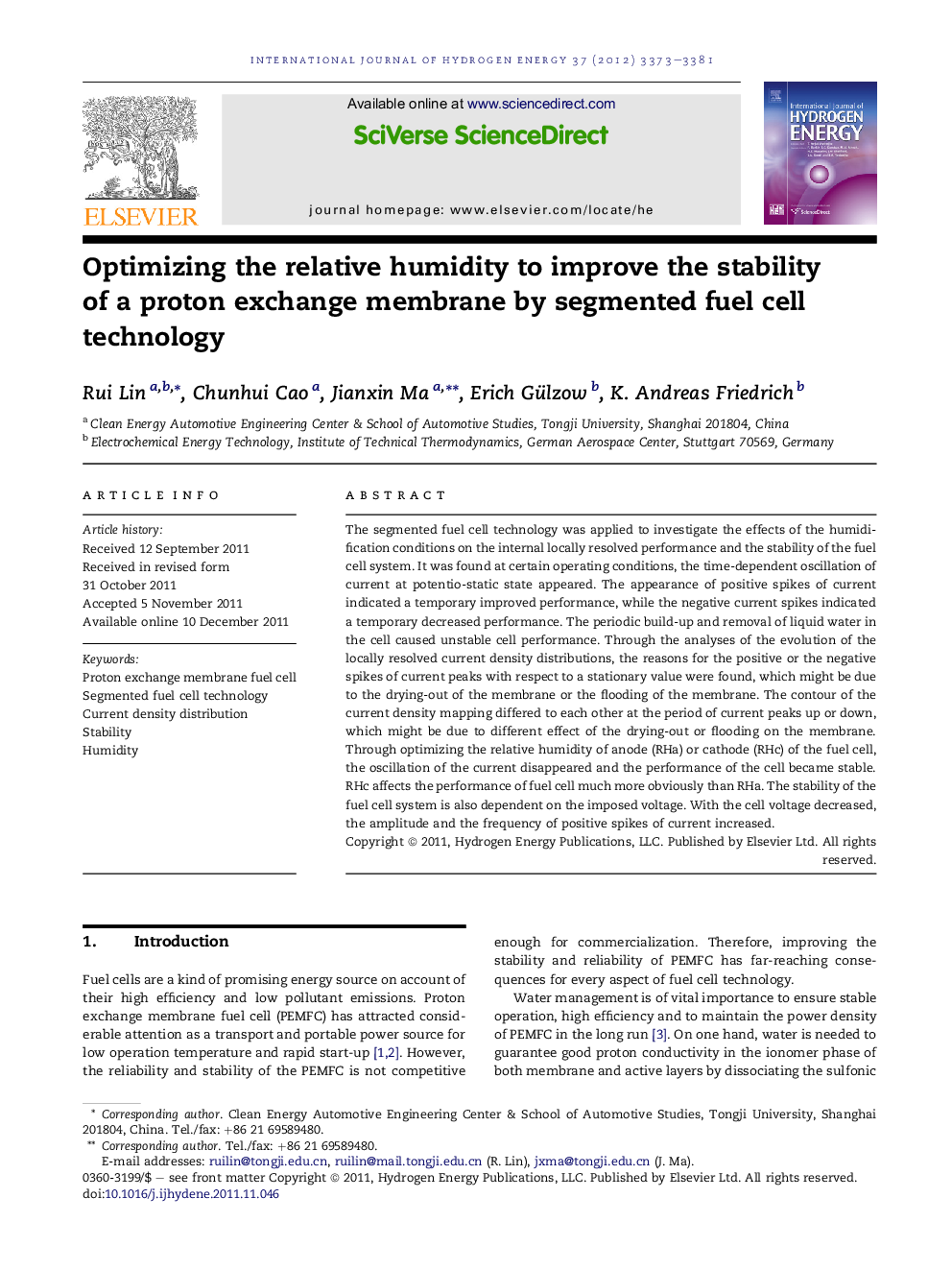| Article ID | Journal | Published Year | Pages | File Type |
|---|---|---|---|---|
| 1282345 | International Journal of Hydrogen Energy | 2012 | 9 Pages |
The segmented fuel cell technology was applied to investigate the effects of the humidification conditions on the internal locally resolved performance and the stability of the fuel cell system. It was found at certain operating conditions, the time-dependent oscillation of current at potentio-static state appeared. The appearance of positive spikes of current indicated a temporary improved performance, while the negative current spikes indicated a temporary decreased performance. The periodic build-up and removal of liquid water in the cell caused unstable cell performance. Through the analyses of the evolution of the locally resolved current density distributions, the reasons for the positive or the negative spikes of current peaks with respect to a stationary value were found, which might be due to the drying-out of the membrane or the flooding of the membrane. The contour of the current density mapping differed to each other at the period of current peaks up or down, which might be due to different effect of the drying-out or flooding on the membrane. Through optimizing the relative humidity of anode (RHa) or cathode (RHc) of the fuel cell, the oscillation of the current disappeared and the performance of the cell became stable. RHc affects the performance of fuel cell much more obviously than RHa. The stability of the fuel cell system is also dependent on the imposed voltage. With the cell voltage decreased, the amplitude and the frequency of positive spikes of current increased.
Graphical abstractThis figure is the contour of current density distribution of at the points of spike up and at the baseline (positive spikes of current with respect to a reference value, 1 Step = 65.0 mA/cm2/Range: 0–1300 mA/cm2/20 Steps/a = 100.0%). Three points, which were respectively before (4a), during (4b) and after (4c) the current peaks up, were selected to compare the mapping of the current density distributions. It was found that the current density distribution was heterogeneous and one of the reasons might be the water accumulation in some area of the flow fields. At different stages, the relative values of the current density distributions were different but the plots of current density distribution were similar. The mappings of the current density distributions were similar in different stages of the positive spike of current, which might occur due to the electro-osmotic drag of water or low humidity operation. The contour of current density distributions during the negative spike of the current was much different from the one before or after the negative spike of cell current. At different stages of the negative spikes of currents, the current density distributions differed greatly, which was interpreted as indicating flooding happened in different locations of the flow fields.Figure optionsDownload full-size imageDownload as PowerPoint slideHighlights► The segmented fuel cell (SFC) technology is an important online diagnostic method. ► SFC technology was applied to investigate the effects of operation conditions. ► We found the build-up and removal of liquid water in cell caused unstable performance. ► The stability of the fuel cell system also depends on the imposed voltage. ► The oscillation of the current disappeared through optimizing the relative humidity.
